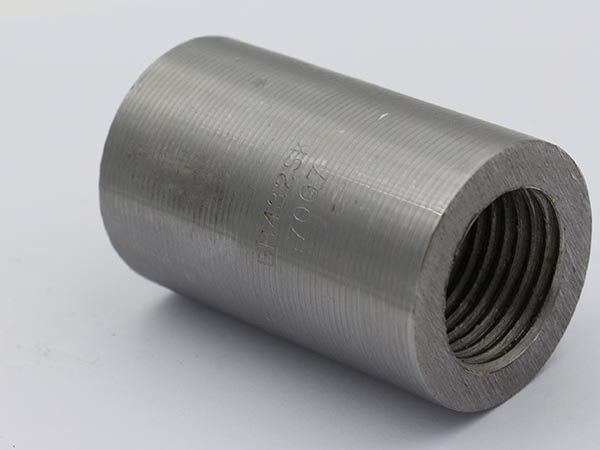
ADTO News
Classification and Advantages of Steel Rebar Sleeves
With the rapid development of the construction industry, traditional steel bar connection methods can no longer meet the needs in terms of connection quality, connection efficiency, and operability. The continuous updating of steel bar connection sleeve technology has driven the progress of the entire construction industry. Today, I will introduce the classification and advantages of steel threaded sleeves in detail.
There are six types of rebar threaded socket connections
1. Standard connection
Used for possible free rotation situations.
2. Extended connection
It is used for occasions where the steel bars are too long and dense, and it is inconvenient to rotate.
The connecting sleeve is all screwed into the extended thread of a steel bar in advance, and then screwed into the end thread of the connected steel bar, and the connecting piece can be locked by turning the steel bar half to one turn, and a standard connecting sleeve can be used.
3. Locking female connection
It is used for the connection of steel bars that cannot be rotated at all, such as bending steel bars, bridges, cast-in-place piles, and other steel cages.
Screw the lock nut and the connecting sleeve into the extended thread in advance, then screw in another steel bar-end thread, and use the lock nut to lock the connecting sleeve. Optional standard or flared connection sleeve with lock nut
4. Positive and negative thread connection
It is used for occasions where the steel bar cannot be rotated at all and the internal force of the steel bar needs to be adjusted, such as construction joints, post-casting belts, etc.
The connecting sleeve has positive and negative screws, which can loosen or tighten two steel bars in one direction of rotation. The connecting sleeve with positive and negative screws should be used first.
Rebar stripping rib rolling straight thread connection is a new type of steel bar connection sleeve technology. Its structural principle is to peel off part of the longitudinal and transverse ribs at the end of the steel bar to be connected by cutting, and then directly roll it into an ordinary straight rib. After threading, use a special straight-threaded steel bar connecting sleeve to connect to form a steel bar connection.
The advantages of steel threaded connection sleeves are as follows:
1. Good mechanical properties and reliable connection:
Because the end of the steel bar is formed by rolling and the material of the steel bar is cold-worked, the strength of the thread and the steel bar are improved, which makes up for the influence of the thread bottom diameter is smaller than the base circle diameter of the steel bar on the weakening of the strength, so that the joint strength of the connection is increased. Higher than the base metal strength, the base metal can give full play to its strength and ductility.
2. Easy to connect:
It can be operated flexibly in the densely arranged steel bars in narrow sites. Convenient construction and high efficiency: steel bar connection sleeves are prefabricated in the factory, and quality assurance: each set of on-site rolling wire head equipment can process nearly 400 joints per shift, which has unparalleled advantages in the construction of large quantities and basement plates. , There is no pollution during construction, no open fire operations, and all-weather construction.
3. Easy to detect
There is no need to use specific testing equipment during construction, and the quality of the joint can be determined just by looking at the exposed wire teeth of the steel bar. Strong applicability: It is suitable for the connection of steel bars in all seismic and non-seismic reinforced concrete structural projects, and it is suitable for bending steel bars, fixed steel bars, steel cages, super-long steel bars, etc., as well as occasions that cannot be rotated.


 Live Chat
Live Chat

